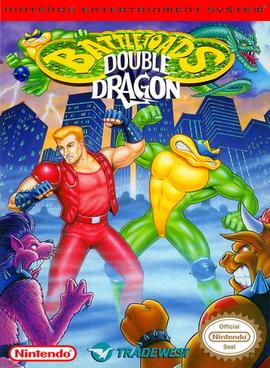
Battletoads/Double Dragon is a 1993 beat 'em up developed by Rare and published by Tradewest. It was originally released for the Nintendo Entertainment System and later ported to the Mega Drive/Genesis, Super NES, and Game Boy. Retro-bit Publishing has re-released the 8-bit NES version in early 2022 with plans to release the 16-bit versions later this year.
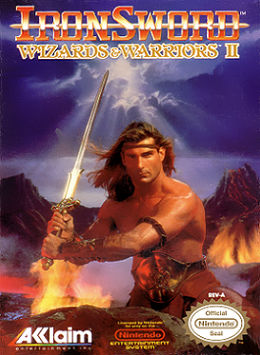
Ironsword: Wizards & Warriors II is a platforming action-adventure video game for the Nintendo Entertainment System (NES) developed by UK-based company Zippo Games, a subsidiary of Rare. The game was published by Acclaim and released in North America in December 1989 and in Europe on March 27, 1991. It is the sequel to Rare's 1987 title Wizards & Warriors. In Ironsword, the player controls the knight warrior Kuros as he ventures in the land of Sindarin. He must defeat the evil wizard Malkil, who has assumed the elemental forms of Earth, Wind, Fire, and Water. Kuros must collect the parts of and assemble the legendary "IronSword" in order to defeat Malkil, who resides at the top of IceFire Mountain.

Little Nemo: The Dream Master is a platform game released on the NES in 1990 by Capcom. It is based on the Japanese animated film, Little Nemo: Adventures in Slumberland from Tokyo Movie Shinsha, which itself is based on the comic strip Little Nemo in Slumberland by Winsor McCay. The game's music was composed by Junko Tamiya, credited in the game as "Gonzou".
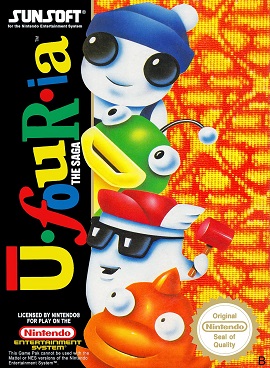
Ufouria: The Saga is a 1991 action-adventure video game developed and published in Japan and Europe by Sunsoft for the Nintendo Entertainment System. It is the first entry in the Hebereke franchise, where almost every installment in the series features a completely different playstyle. Controlling a humanoid-looking character called Bop-Louie through an interconnected world, the game focuses on exploration and searching for items and power-ups in vein of Metroid and Blaster Master, fighting bosses and minibosses. During gameplay, the player locates the main character's three friends, each of which becomes a playable character and have unique skills that allow the player to reach previously inaccessible areas.

Wonder Boy III: The Dragon's Trap, known as Monster World II in Japan, is a platforming action-adventure video game developed by Westone as part of Sega's Wonder Boy series. It was published by Sega and released for the Master System in 1989 and for the Game Gear in 1992 as Wonder Boy: The Dragon's Trap. It was ported by Hudson Soft and released in 1991 for the TurboGrafx-16/PC Engine under the name Dragon's Curse. It was also ported in 1993 by Brazilian company Tec Toy under the title Turma da Mônica em o Resgate, with the game retooled to include characters from Brazilian comic book series Monica's Gang. A remake developed by Lizardcube and published by DotEmu, titled Wonder Boy: The Dragon's Trap, was released in April 2017.

Xenon 2: Megablast is a 1989 shoot 'em up video game developed by The Bitmap Brothers and published by Image Works for the Amiga and Atari ST. It was later converted to the Master System, PC-98, X68000, Mega Drive, Commodore CDTV, Game Boy, Acorn Archimedes and Atari Jaguar platforms. The game is a sequel to Xenon and takes place a millennium after the previous title. The goal of the game is to destroy a series of bombs planted throughout history by the Xenites, the vengeful antagonists of the first game.

3 Count Bout is a wrestling arcade game released by SNK in 1993.

Neutopia II is a 1991 action-adventure/action role-playing video game developed and published in Japan by Hudson Soft and in North America by Turbo Technologies for the TurboGrafx-16. It is the sequel to Neutopia, which was released earlier in 1989. In the game, the player takes control of Jazeta's son, who embarks on a quest to both save his father and defeat the returning evil demon Dirth.

Konami Hyper Soccer is a 1992 soccer video game developed and published by Konami in Europe and Mattel in Australia for the Nintendo Entertainment System. Part of the Hyper Sports series, which included Hyper Olympic, its sequel Hyper Sports and Hyper Athlete, it is the second soccer game by Konami following Konami's Soccer on the MSX, and their first soccer game on a Nintendo platform.

BlaZeon is a horizontally scrolling shoot 'em up arcade game released by Atlus in 1992 and was ported to the Super Nintendo Entertainment System in the same year. The game's most distinguishable feature is that players come equipped with a device that allows them to freeze and control certain robots.
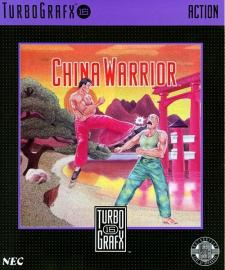
China Warrior, known as The Kung Fu in Japan, is a beat 'em up video game created in 1987 by Hudson Soft for the PC Engine/TurboGrafx-16. The game received mixed reviews upon release, with praise for its large sprite graphics but criticism towards its gameplay.

The Incredible Hulk is a 1994 video game released for the Mega Drive, Master System, Game Gear, and SNES. Developed by Probe Software and published by U.S. Gold, the game is based on the Marvel Comics superhero Hulk and showcases him within the context of a side-scrolling action game with platforming and beat 'em up elements. The narrative involves the Hulk attempting to thwart the world domination bid of his nemesis, the Leader, while engaging in combat with other arch-rivals.
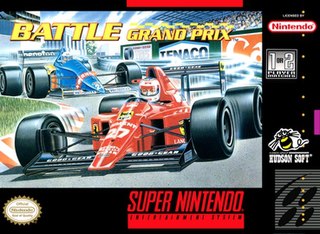
Battle Grand Prix is a 1992 Formula One racing video game developed by KID. One or two players can pit themselves in three Grand Prix races. Each of the different team cars have different color schemes. The courses vary from blacktop to concrete, and rain is also included and is implemented in the game.

Burai Fighter is a shoot 'em up video game developed by KID for the Nintendo Entertainment System. The game was released in North America by Taxan in March 1990, Europe by Nintendo and Australia by Mattel in 1990, and Japan by Taito on July 20, 1990. The game was also ported to the Game Boy and retitled as Burai Fighter Deluxe, and was released in Japan on June 27, 1990, in North America in January 1991 and in Europe in 1991; this port eventually wound up on the Game Boy Color as Space Marauder, originally released in Japan as Burai Fighter Color, as the original Game Boy version is not compatible with the later models.

Isolated Warrior is a 1991 video game developed by KID and published in Japan by Vap, in North America by NTVIC, and Europe by Nintendo. It falls in the shooter genre, although its gameplay also includes elements reminiscent of platforming, while it features isometric projection, similar to Sega's Zaxxon.

Ragnagard is 2D arcade fighting game developed by Saurus and System Vision, and published by SNK and Saurus for the Neo Geo arcade, Neo Geo CD and Sega Saturn. The game's characters are all based on Shinto deities.

The Real Ghostbusters is a 1987 shoot 'em up arcade game developed and published by Data East in the United States. It is loosely based on the animated series of the same name. In Japan, Data East released it as a non-Ghostbusters arcade game under the title Meikyuu Hunter G. In 1989, Activision published The Real Ghostbusters for Amiga, Amstrad CPC, Atari ST, Commodore 64, and ZX Spectrum.

Brutal Sports Football is a 1993 sports video game developed by Teque London and originally published by Millennium Interactive for the Amiga. It was re-published for MS-DOS and Amiga CD32, and later became the first third-party title published for the Atari Jaguar. The first entry in the Brutal Sports series, the game is a fictional style of football played against human or computer-controlled opponents. It features a different take on american football by emphasising the violent aspect of the sport.

Super Sidekicks is a 1992 soccer arcade video game developed and published by SNK. It is the first installment in the eponymous series and the second soccer game released for Neo Geo MVS, succeeding Soccer Brawl (1991). Featuring an arcade-style approach to soccer compared to other games released at the time, the title allows players to choose any of the available game modes with AI-controlled opponents or other human players with the team of their choosing. Its gameplay uses a simplified two-button configuration.

Batman Returns is a 1993 beat 'em up video game developed and published by Konami for the Nintendo Entertainment System. Based on the DC Comics superhero Batman, it is inspired by the Warner Bros.'s 1992 film of the same name. In the main storyline, Batman must confront both Catwoman and the Penguin.




















